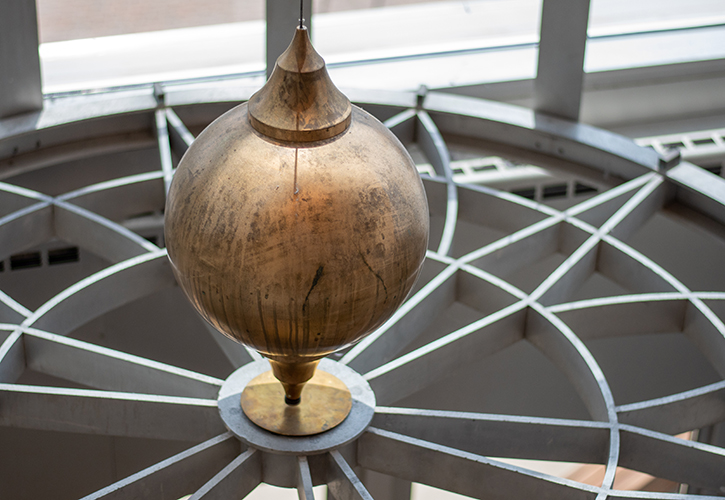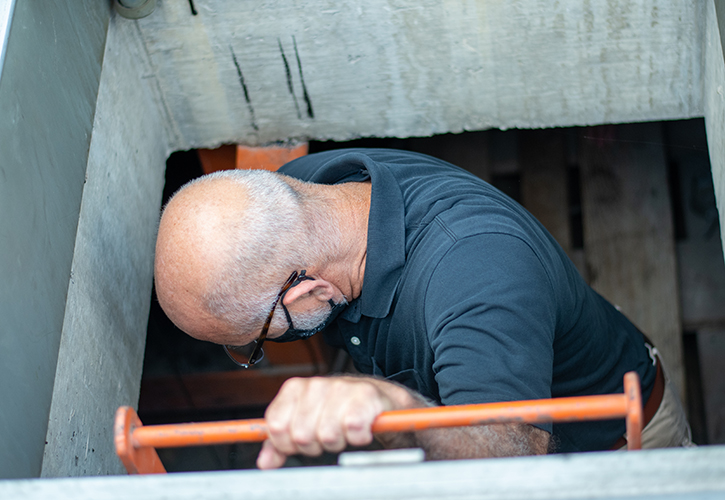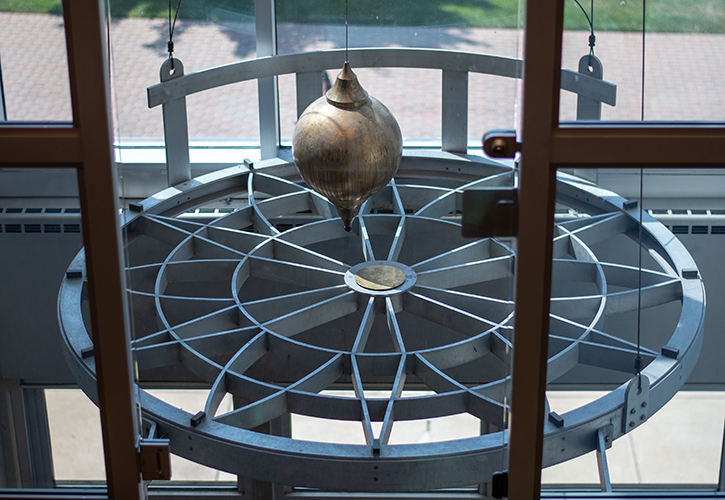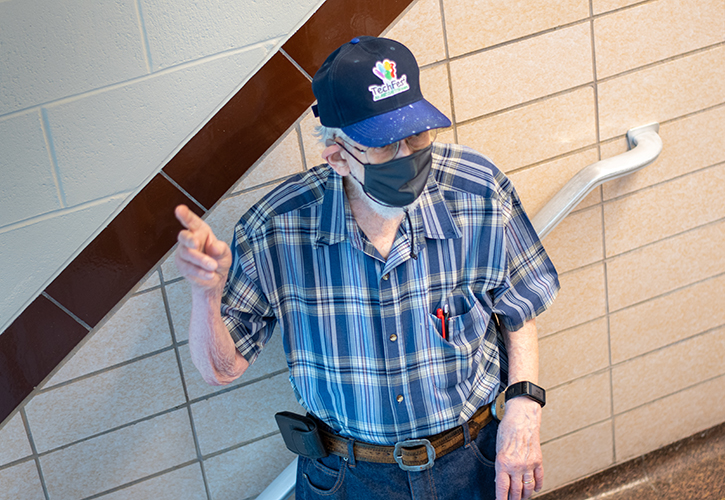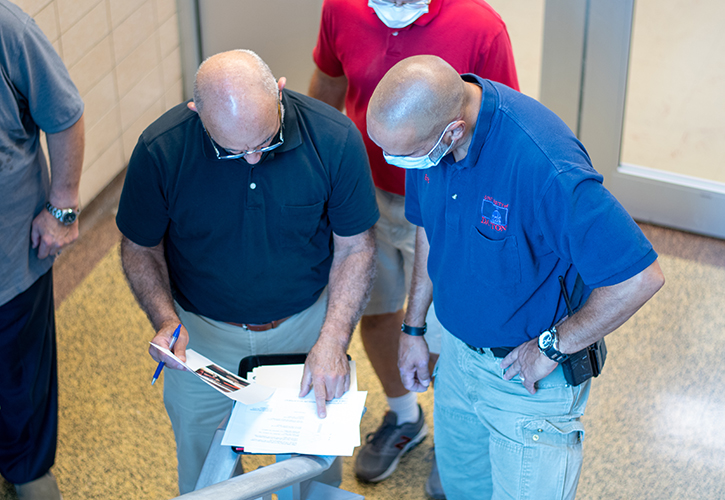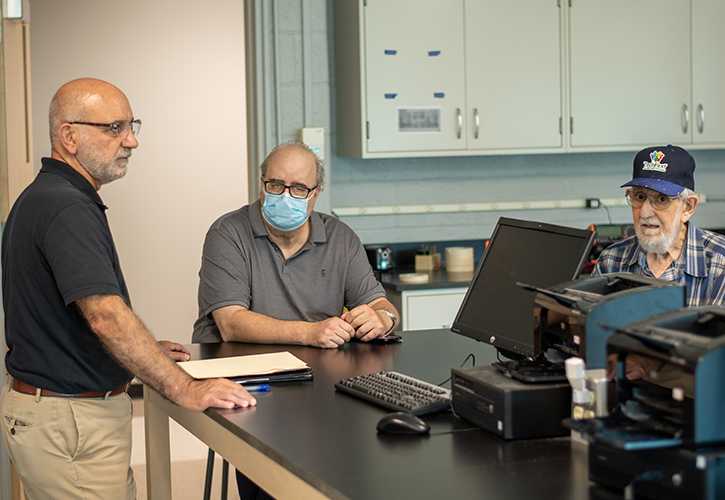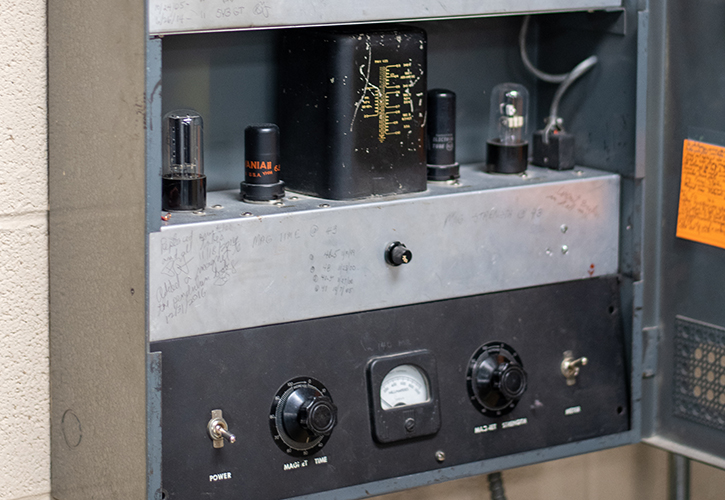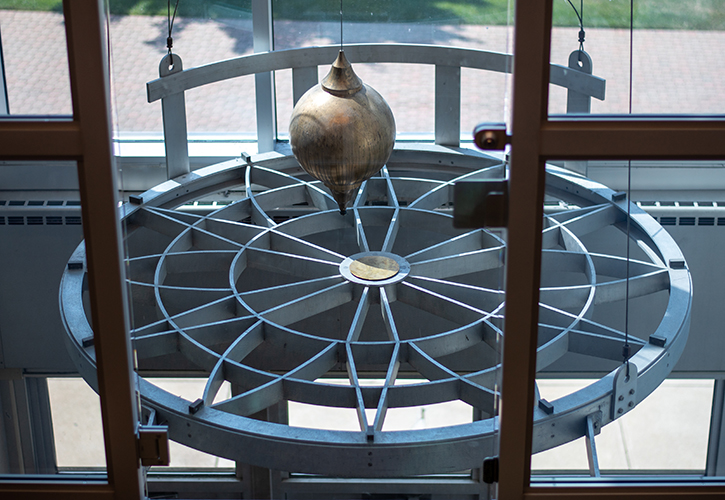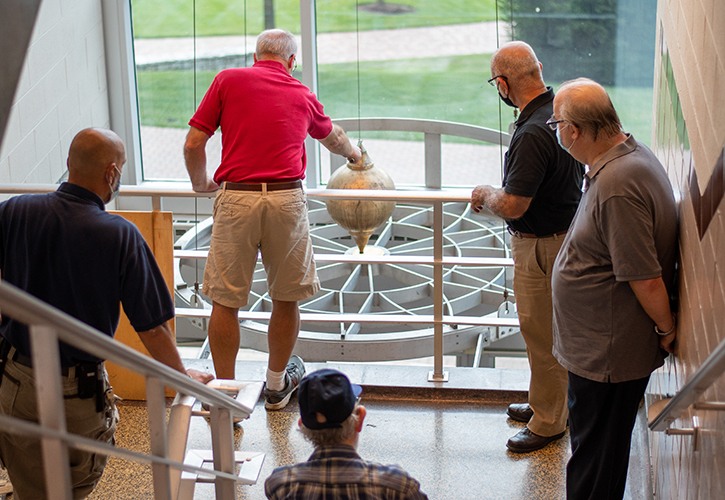College of Arts and Sciences Newsroom
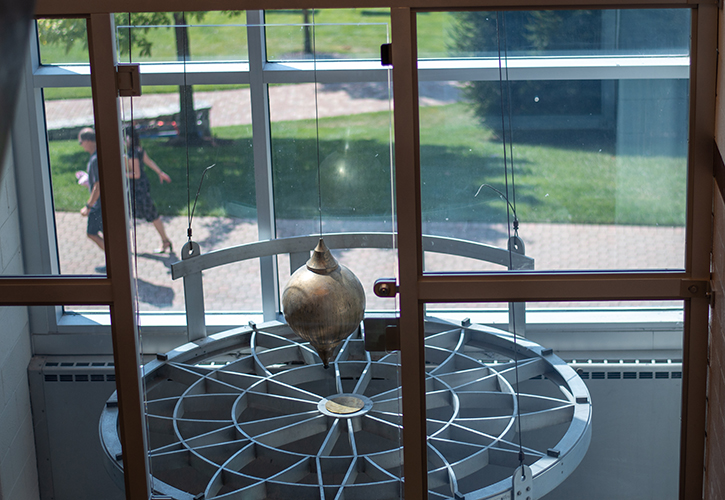
University of Dayton Science Center pendulum swinging again after restoration and repairs
By Kassidy Lammers ’24
A University of Dayton campus landmark since 1959, the Foucault pendulum in Sherman Hall is swinging again after several rounds of repairs in recent years.
After decades of wear and tear, and a more recent alignment issue in 2020, faculty and staff restored the pendulum to working order during the summer. The project was no simple task, involving a great deal of risk for workers and adjacent walls in the University’s Science Center.
A familiar sight to generations of alumni, the Foucault pendulum is named after French physicist Léon Foucault and was conceived as an experiment to demonstrate the Earth's rotation. When first installed in Sherman Hall, it was one of only a handful of its kind, said Professor Emeritus Perry P. Yaney, who has managed its maintenance since he joined the physics faculty in 1965.
“The Marianist brothers paid for it out of their old budget,” Yaney said. “We purchased the fourth one in 1957.” Installation was completed in 1959, and the Sherman Hall pendulum has now hung for more than six decades, outlasting the Smithsonian Institution’s Foucault Pendulum, which was removed in 1998.
Yaney, 90, oversaw repairs in 2017 and 2021 to protect and preserve this important University symbol.
The repair process involved considerable potential for danger. Hanging from the Sherman Hall stairwell ceiling, the pendulum is suspended by a stranded cable originally designed for use in aircraft, which provides strength and flexibility in its motion. The cable bears significant weight, so if control was lost while handling it, the cable would fall and whip around, putting workers and surrounding walls in harm’s way.
In 2017, the need for cable repairs emerged.
“At the top of the bob I started noticing some of the strands were broken,” Yaney said. “It turns out we were more than 20 years late. It should have been replaced long ago.”
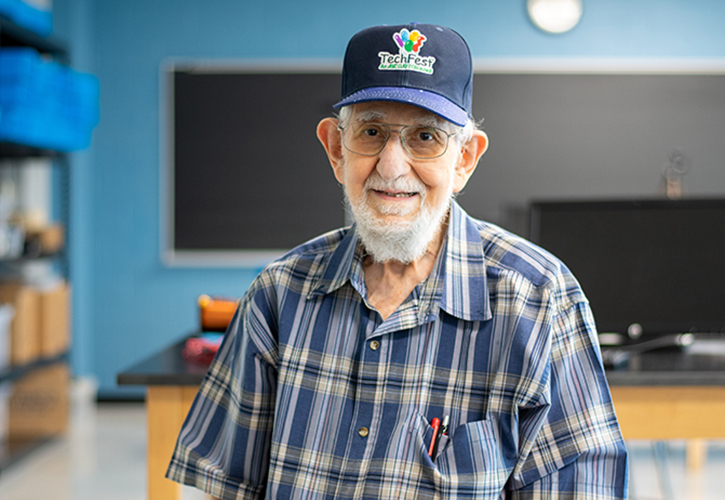
With advice, supplies and a new cable from California-based Academy Pendulum Sales, which manufactured the pendulum for the University, and the careful efforts of faculty and outside contractors, the repairs were successfully completed in 2017.
“In 2018 and 2019, it was working well,” Yaney said.
However, the pendulum sustained damage in 2020, creating the need for yet another repair. “Ever since then we’ve had trouble with it, and it’s been challenging to figure out what the problems were and to fix them.”
No longer able to physically reach the access point for repairs because of his age, Yaney has begun to pass the torch of managing the pendulum’s function and repairs to Joe Mitolo, architectural project manager for the Department of Facilities Management, and Todd Smith, associate professor and Department of Physics interim chair.
Ultimately, Yaney said that the issue was with the “alignment of the armature with the magnet” that maintains the pendulum’s consistent swing. In an effort to prevent future damage and create a better display for the pendulum, a glazed wall was installed this summer at the stair landing.
The repairs and new glass will help ensure that the pendulum will keep swinging, continuing to demonstrate Earth’s rotation and contributing to the University’s sense of continuity.
As a faculty member, Yaney helped start the engineering graduate program in electro-optics, which is now the main physics graduate program. He retired in 2004, but his passion for physics and helping students has made him a constant presence at the University and in the Department of Physics. Calling physics his “first love,” Yaney has continued to give seminars, conduct research and to manage the pendulum’s function.
“I’ve kept it going, all of these years,” Yaney said of the pendulum. “That’s just my nature, I fix things and make them work if I can.”
Smith, the department’s interim chair, said the pendulum is an important symbol to the University community.
“The idea that we have had the pendulum there for the parents and their kids, it is nice to know that things remain the same,” Smith said. “It is nice to come back and see that something is still the same.”
For more information, visit the Department of Physics website and Yaney’s website.

